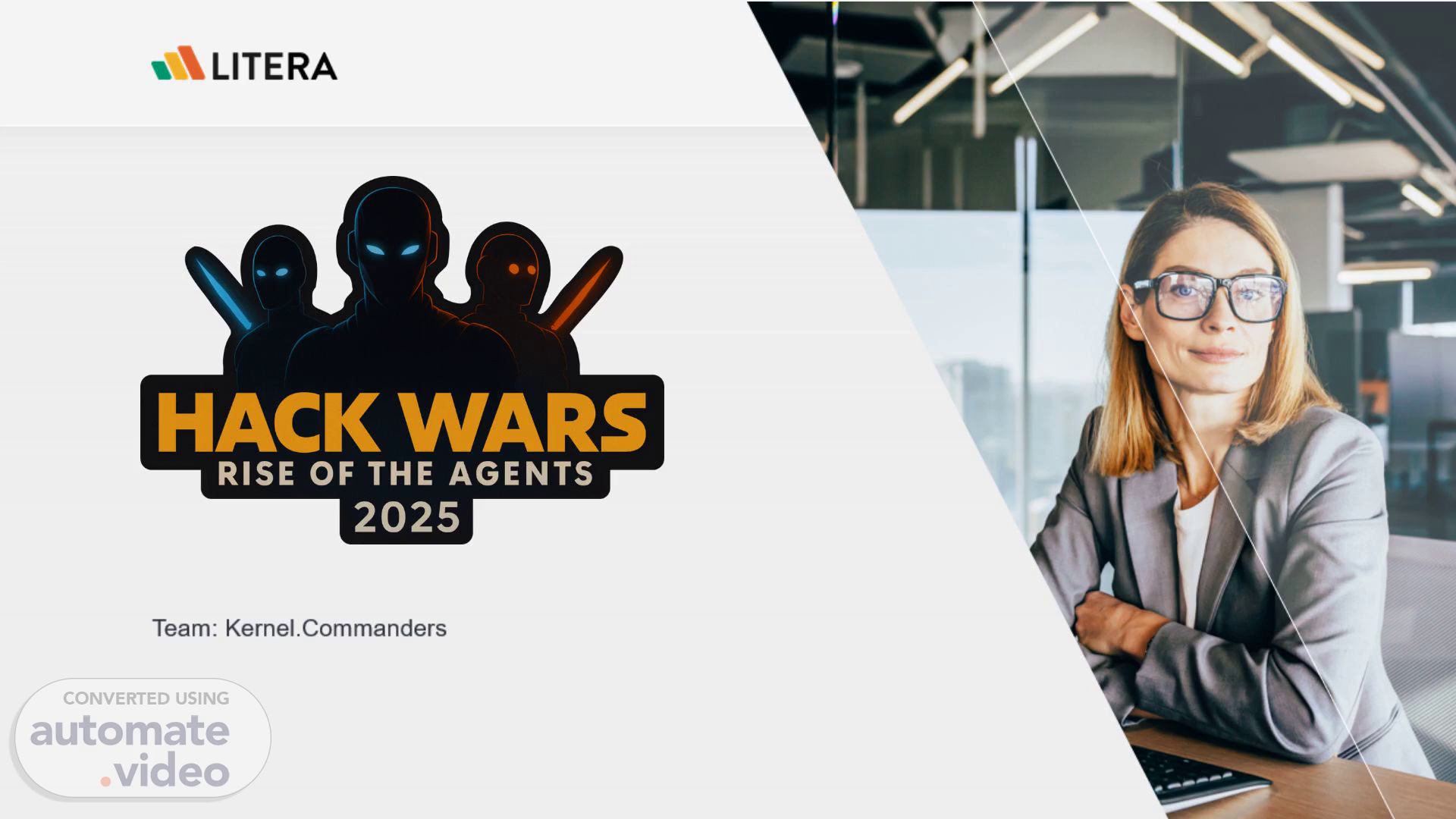Scene 1 (0s)
[Audio] Hello, we are Kernel Commanders presenting our HackWars concept..
Scene 2 (11s)
[Audio] Here is our agents for discussion.. The Problem.
Scene 3 (21s)
[Audio] Problem Statement. Problem Statement.
Scene 4 (27s)
[Audio] The problem statements that we are focusing are as below: challanges Modern AI systems are powerful—but opaque. Teams lack unified visibility into performance, reliability, and cost. Diagnosing latency, controlling token usage, and ensuring tool stability is a struggle. Current solutions are fragmented and reactive, leaving developers chasing issues instead of solving them. We need real-time, holistic insights to optimize and scale with confidence..
Scene 5 (1m 0s)
[Audio] Our Solution. Our Solution.
Scene 6 (1m 6s)
[Audio] The are offering a solution called AgentIQ which is an AI Agent bundled with three MCP tools. AgentIQ: AI Health & Performance Platform What is AgentIQ? A modular system integrating a React dashboard, Semantic Kernel backend, and three specialized .NET 8 MCP tools for seamless monitoring and profiling. How It Works: The AgentIQ Dashboard provides real-time visibility and control. The backend orchestrates intelligent workflows and multi-agent coordination. MCP tools deliver deep diagnostics in three critical areas: Key Features: LatencyLens: Tracks and analyses latency across system components, helping teams pinpoint and resolve performance bottlenecks. TokenTracker: Monitors token consumption, enabling cost control and efficiency for LLM-based operations. ToolPulse: Continuously evaluates the health and reliability of integrated tools, detecting failures and service outages. Why It's Exciting: AgentIQ transforms troubleshooting into proactive optimization. Empowers teams with actionable insights, driving reliability and efficiency. Sets a new standard for intelligent, modular AI operations..
Scene 7 (2m 32s)
[Audio] Value Preposition. 03 Value Proposition.
Scene 8 (2m 38s)
[Audio] Our value prepositions are as below: Core Benefits: Unified Monitoring: One dashboard for all agent and tool metrics—no more siloed data. Performance Optimization: LatencyLens identifies and resolves bottlenecks, improving response times. Cost Efficiency: TokenTracker reduces operational costs by tracking and controlling token usage. Reliability Assurance: ToolPulse detects failures early, ensuring robust service delivery. Competitive Advantage: Real-time, end-to-end visibility and actionable insights—far beyond fragmented legacy tools. Advanced analytics and scoring algorithms for deeper, more meaningful evaluations. Expected Impact: Up to 50% reduction in troubleshooting time. 30% improvement in system reliability and uptime. 20% savings on token-related costs. Cost: Built on open-source technologies (.NET 8, React, SQL Server). Scalable architecture minimizes maintenance overhead..
Scene 9 (3m 51s)
[Audio] Implementation. 04 Implementation.
Scene 10 (3m 56s)
[Audio] Structure of AgentIQ looks as below: Technical Stack: Frontend: React 19, Material-UI, Recharts for interactive dashboards. Backend: .NET 8 Web API, Entity Framework Core, Swagger/OpenAI. MCP Tools: LatencyLens, TokenTracker, ToolPulse implemented in .NET 8. Database: SQL Server for historical data and trend analysis. Automation: PowerShell scripts for seamless multi-service startup. Quick Start: Automated PowerShell script launches all services. Manual startup options for granular control. Full API documentation and MCP Inspector integration..
Scene 11 (4m 43s)
[Audio] Demonstration. 05 Demonstration.
Scene 12 (4m 49s)
[Audio] We have completed the end-to-end implementation of AgentIQ along with MCP Tools, but we are facing some issue during Integration, therefore, we will be showcasing the dashboard and try running MCP tools independently..
Scene 13 (5m 3s)
[Audio] Thank you !. Thank You !.
